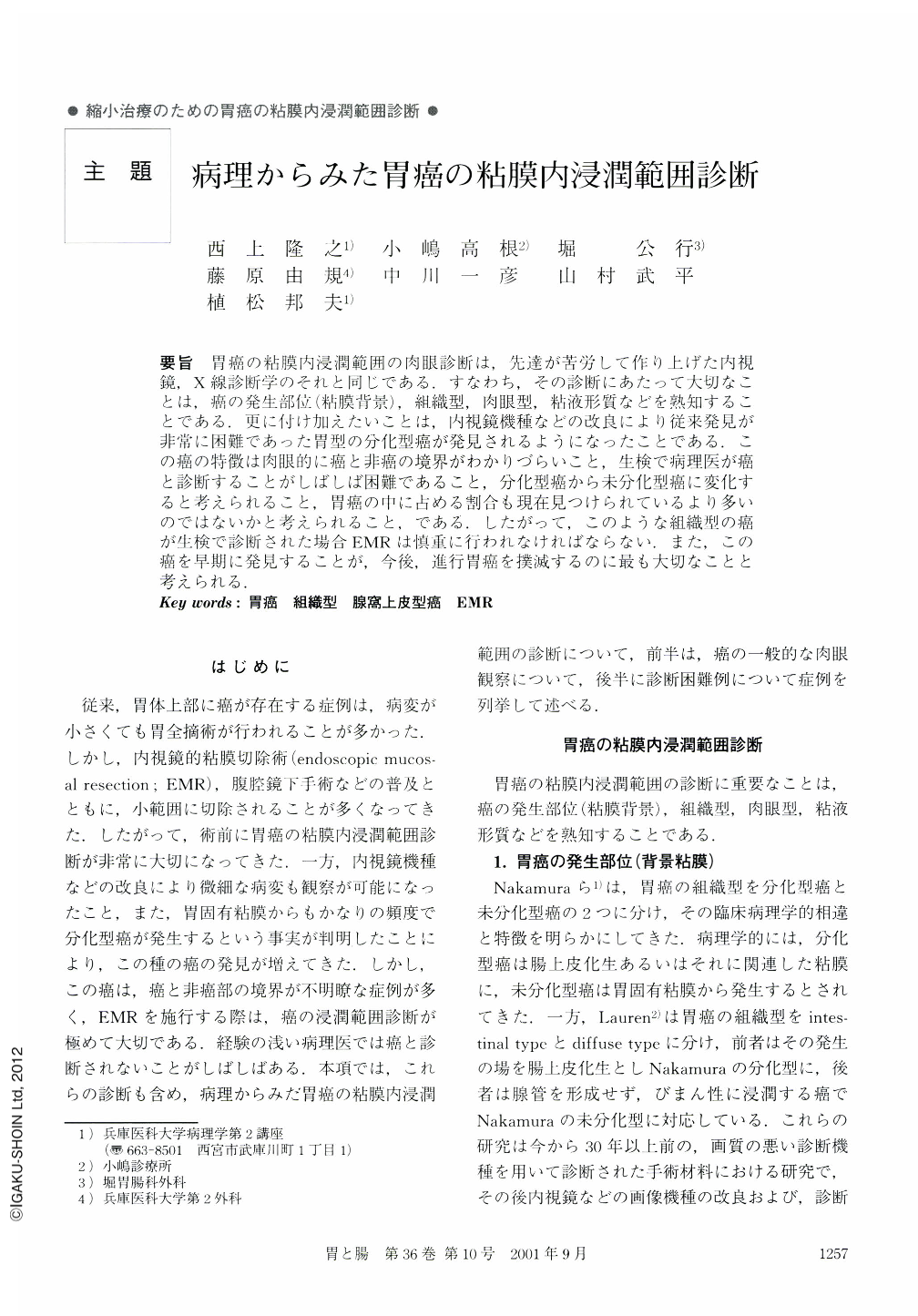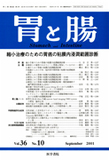Japanese
English
- 有料閲覧
- Abstract 文献概要
- 1ページ目 Look Inside
- サイト内被引用 Cited by
要旨 胃癌の粘膜内浸潤範囲の肉眼診断は,先達が苦労して作り上げた内視鏡,X線診断学のそれと同じである.すなわち,その診断にあたって大切なことは,癌の発生部位(粘膜背景),組織型,肉眼型,粘液形質などを熟知することである.更に付け加えたいことは,内視鏡機種などの改良により従来発見が非常に困難であった胃型の分化型癌が発見されるようになったことである,この癌の特徴は肉眼的に癌と非癌の境界がわかりづらいこと,生検で病理医が癌と診断することがしばしば困難であること,分化型癌から未分化型癌に変化すると考えられること,胃癌の中に占める割合も現在見つけられているより多いのではないかと考えられること,である.したがって,このような組織型の癌が生検で診断された場合EMRは慎重に行われなければならない.また,この癌を早期に発見することが,今後,進行胃癌を撲滅するのに最も大切なことと考えられる.
Macroscopical diagnosis of extent of gastric cancer is consistent with endoscopical and radiological diagnoses. It is important to know the region of occurrence, macroscopical finding, histological type and mucin phenotype of gastric cancer. Although it was difficult to find well-differentiated adenocarcinoma in the fundic gland area formerly. Recently, the detection of such a cancer is becoming increasingly easier with the greater development of the endoscope. This cancer is initially diagnosed as well or moderately differentiated adenocarcinoma, but it often changes into signet ring cell carcinoma or poorly-differentiated adenocarcinoma. So we must find this type of cancer as early as possible. We can diagnose the extent of mucosal infiltration of early gastric cancer by using the verious criteria which pioneers have proposed. However, there are some exceptions. So I list some cases in which we found it difficult to diagnose the extent of infiltration.

Copyright © 2001, Igaku-Shoin Ltd. All rights reserved.


